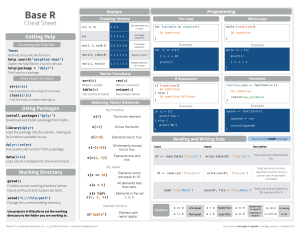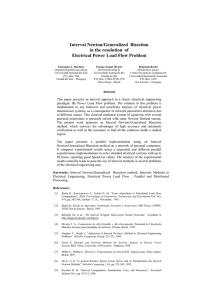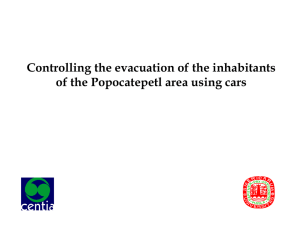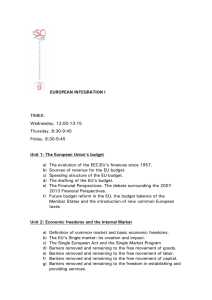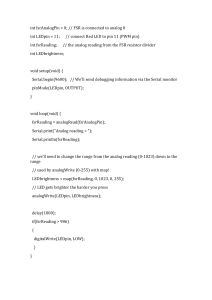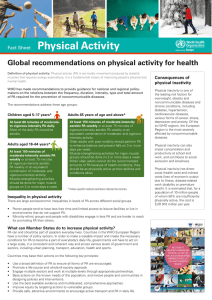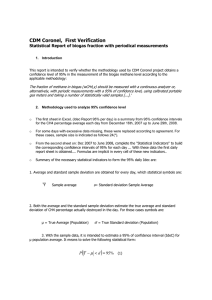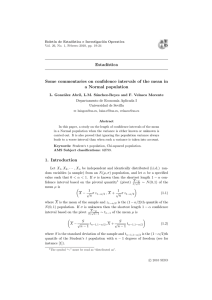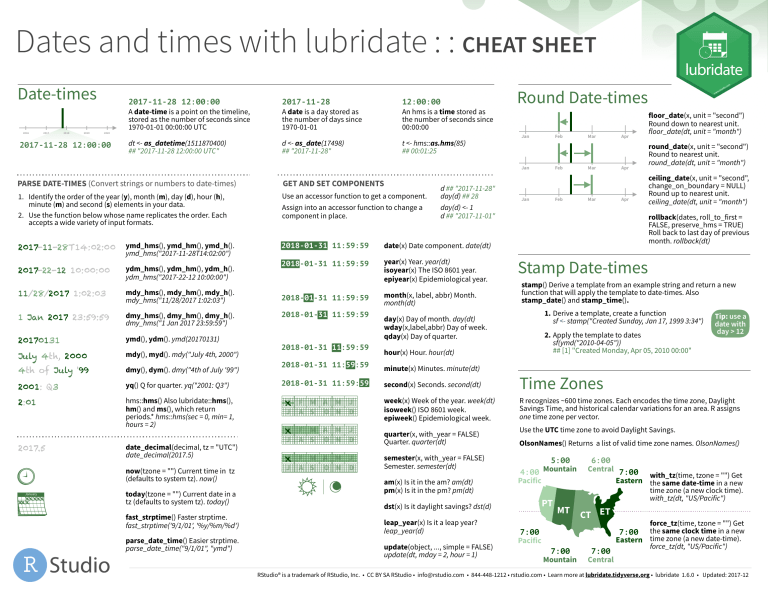
Dates and times with lubridate : : CHEAT SHEET
Date-times
2016
2017
2018
2019
2020
2017-11-28 12:00:00
2017-11-28 12:00:00
A date-time is a point on the timeline,
stored as the number of seconds since
1970-01-01 00:00:00 UTC
2017-11-28
A date is a day stored as
the number of days since
1970-01-01
12:00:00
An hms is a time stored as
the number of seconds since
00:00:00
dt <- as_datetime(1511870400)
## "2017-11-28 12:00:00 UTC"
d <- as_date(17498)
## "2017-11-28"
t <- hms::as.hms(85)
## 00:01:25
Round Date-times
Jan
Feb
Jan
PARSE DATE-TIMES (Convert strings or numbers to date-times)
GET AND SET COMPONENTS
1. Identify the order of the year (y), month (m), day (d), hour (h),
minute (m) and second (s) elements in your data.
2. Use the function below whose name replicates the order. Each
accepts a wide variety of input formats.
Use an accessor function to get a component.
Assign into an accessor function to change a
component in place.
2017-11-28T14:02:00
ymd_hms(), ymd_hm(), ymd_h().
ymd_hms("2017-11-28T14:02:00")
2017-22-12 10:00:00
ydm_hms(), ydm_hm(), ydm_h().
ydm_hms("2017-22-12 10:00:00")
11/28/2017 1:02:03
mdy_hms(), mdy_hm(), mdy_h().
mdy_hms("11/28/2017 1:02:03")
1 Jan 2017 23:59:59
dmy_hms(), dmy_hm(), dmy_h().
dmy_hms("1 Jan 2017 23:59:59")
20170131
ymd(), ydm(). ymd(20170131)
July 4th, 2000
mdy(), myd(). mdy("July 4th, 2000")
4th of July '99
dmy(), dym(). dmy("4th of July '99")
2001: Q3
yq() Q for quarter. yq("2001: Q3")
2:01
hms::hms() Also lubridate::hms(),
hm() and ms(), which return
periods.* hms::hms(sec = 0, min= 1,
hours = 2)
2017.5
date_decimal(decimal, tz = "UTC")
date_decimal(2017.5)
now(tzone = "") Current time in tz
(defaults to system tz). now()
January
xxxxx
xxx
today(tzone = "") Current date in a
tz (defaults to system tz). today()
fast_strptime() Faster strptime.
fast_strptime('9/1/01', '%y/%m/%d')
parse_date_time() Easier strptime.
parse_date_time("9/1/01", "ymd")
d ## "2017-11-28"
day(d) ## 28
day(d) <- 1
d ## "2017-11-01"
2018-01-31 11:59:59
date(x) Date component. date(dt)
2018-01-31 11:59:59
year(x) Year. year(dt)
isoyear(x) The ISO 8601 year.
epiyear(x) Epidemiological year.
2018-01-31 11:59:59
month(x, label, abbr) Month.
month(dt)
2018-01-31 11:59:59
day(x) Day of month. day(dt)
wday(x,label,abbr) Day of week.
qday(x) Day of quarter.
2018-01-31 11:59:59
Feb
Jan
Feb
Mar
Mar
Mar
Apr
Apr
Apr
floor_date(x, unit = "second")
Round down to nearest unit.
floor_date(dt, unit = "month")
round_date(x, unit = "second")
Round to nearest unit.
round_date(dt, unit = "month")
ceiling_date(x, unit = "second",
change_on_boundary = NULL)
Round up to nearest unit.
ceiling_date(dt, unit = "month")
rollback(dates, roll_to_first =
FALSE, preserve_hms = TRUE)
Roll back to last day of previous
month. rollback(dt)
Stamp Date-times
stamp() Derive a template from an example string and return a new
function that will apply the template to date-times. Also
stamp_date() and stamp_time().
1. Derive a template, create a function
sf <- stamp("Created Sunday, Jan 17, 1999 3:34")
2. Apply the template to dates
sf(ymd("2010-04-05"))
## [1] "Created Monday, Apr 05, 2010 00:00"
hour(x) Hour. hour(dt)
Tip: use a
date with
day > 12
2018-01-31 11:59:59
minute(x) Minutes. minute(dt)
2018-01-31 11:59:59
second(x) Seconds. second(dt)
Time Zones
R recognizes ~600 time zones. Each encodes the time zone, Daylight
Savings Time, and historical calendar variations for an area. R assigns
one time zone per vector.
J
x
F M A M
A S O N
J
D
week(x) Week of the year. week(dt)
isoweek() ISO 8601 week.
epiweek() Epidemiological week.
J
x
F M A M
A S O N
J
D
quarter(x, with_year = FALSE)
Quarter. quarter(dt)
F M A M
A S O N
J
D
semester(x, with_year = FALSE)
Semester. semester(dt)
J
J
J
x
J
am(x) Is it in the am? am(dt)
pm(x) Is it in the pm? pm(dt)
Use the UTC time zone to avoid Daylight Savings.
OlsonNames() Returns a list of valid time zone names. OlsonNames()
5:00
Mountain
4:00
Pacific
PT
dst(x) Is it daylight savings? dst(d)
leap_year(x) Is it a leap year?
leap_year(d)
update(object, ..., simple = FALSE)
update(dt, mday = 2, hour = 1)
MT
6:00
Central 7:00
with_tz(time, tzone = "") Get
Eastern the same date-time in a new
time zone (a new clock time).
with_tz(dt, "US/Pacific")
CT ET
7:00
Pacific
7:00
Mountain
7:00
Central
force_tz(time, tzone = "") Get
7:00 the same clock time in a new
Eastern time zone (a new date-time).
force_tz(dt, "US/Pacific")
RStudio® is a trademark of RStudio, Inc. • CC BY SA RStudio • [email protected] • 844-448-1212 • rstudio.com • Learn more at lubridate.tidyverse.org • lubridate 1.6.0 • Updated: 2017-12
Math with Date-times — Lubridate provides three classes of timespans to facilitate math with dates and date-times
Math with date-times relies on the timeline,
which behaves inconsistently. Consider how
the timeline behaves during:
Periods track changes in clock times,
which ignore time line irregularities.
Durations track the passage of
physical time, which deviates from
clock time when irregularities occur.
Intervals represent specific intervals
of the timeline, bounded by start and
end date-times.
Not all years
are 365 days
due to leap days.
A normal day
nor + minutes(90)
nor + dminutes(90)
interval(nor, nor + minutes(90))
Not all minutes
are 60 seconds due to
leap seconds.
nor <- ymd_hms("2018-01-01 01:30:00",tz="US/Eastern")
1:00
2:00
3:00
4:00
The start of daylight savings (spring forward)
gap <- ymd_hms("2018-03-11 01:30:00",tz="US/Eastern")
1:00
2:00
3:00
4:00
The end of daylight savings (fall back)
lap <- ymd_hms("2018-11-04 00:30:00",tz="US/Eastern")
12:00
1:00
2:00
3:00
1:00
2:00
3:00
gap + minutes(90)
1:00
2:00
3:00
1:00
4:00
3:00
4:00
1:00
2:00
2:00
3:00
12:00
3:00
1:00
1:00
2:00
3:00
4:00
4:00
1:00
2:00
3:00
4:00
interval(lap, lap + minutes(90))
2:00
3:00
leap + dyears(1)
12:00
1:00
2:00
2020
2021
2019
2020
2021
2019
3:00
interval(leap, leap + years(1))
2020
2021
2019
2020
%m+% and %m-% will roll imaginary
dates to the last day of the previous
month.
jan31 %m+% months(1)
## "2018-02-28"
leap <- ymd("2019-03-01")
2019
It is possible to create an imaginary date
by adding months, e.g. February 31st
jan31 <- ymd(20180131)
jan31 + months(1)
## NA
interval(gap, gap + minutes(90))
lap + dminutes(90)
leap + years(1)
Leap years and leap seconds
2:00
gap + dminutes(90)
lap + minutes(90)
12:00
1:00
4:00
2021
add_with_rollback(e1, e2, roll_to_first =
TRUE) will roll imaginary dates to the
first day of the new month.
add_with_rollback(jan31, months(1),
roll_to_first = TRUE)
## "2018-03-01"
PERIODS
DURATIONS
INTERVALS
Add or subtract periods to model events that happen at specific clock
times, like the NYSE opening bell.
Add or subtract durations to model physical processes, like battery life.
Durations are stored as seconds, the only time unit with a consistent length.
Difftimes are a class of durations found in base R.
Divide an interval by a duration to determine its physical length, divide
an interval by a period to determine its implied length in clock time.
Make a period with the name of a time unit pluralized, e.g.
Make a duration with the name of a period prefixed with a d, e.g.
Make an interval with interval() or %--%, e.g.
dd <- ddays(14)
dd
"1209600s (~2 weeks)"
i <- interval(ymd("2017-01-01"), d)
j <- d %--% ymd("2017-12-31")
p <- months(3) + days(12)
p
"3m 12d 0H 0M 0S"
Number Number
of months of days etc.
years(x = 1) x years.
months(x) x months.
weeks(x = 1) x weeks.
days(x = 1) x days.
hours(x = 1) x hours.
minutes(x = 1) x minutes.
seconds(x = 1) x seconds.
milliseconds(x = 1) x milliseconds.
microseconds(x = 1) x microseconds
nanoseconds(x = 1) x nanoseconds.
picoseconds(x = 1) x picoseconds.
period(num = NULL, units = "second", ...)
An automation friendly period constructor.
period(5, unit = "years")
as.period(x, unit) Coerce a timespan to a
period, optionally in the specified units.
Also is.period(). as.period(i)
period_to_seconds(x) Convert a period to
the "standard" number of seconds implied
by the period. Also seconds_to_period().
period_to_seconds(p)
Exact
Equivalent
length in in common
seconds
units
dyears(x = 1) 31536000x seconds.
dweeks(x = 1) 604800x seconds.
ddays(x = 1) 86400x seconds.
dhours(x = 1) 3600x seconds.
dminutes(x = 1) 60x seconds.
dseconds(x = 1) x seconds.
dmilliseconds(x = 1) x x 10-3 seconds.
dmicroseconds(x = 1) x x 10-6 seconds.
dnanoseconds(x = 1) x x 10-9 seconds.
dpicoseconds(x = 1) x x 10-12 seconds.
Start
Date
End
Date
## 2017-01-01 UTC--2017-11-28 UTC
## 2017-11-28 UTC--2017-12-31 UTC
a %within% b Does interval or date-time a fall
within interval b? now() %within% i
int_start(int) Access/set the start date-time of
an interval. Also int_end(). int_start(i) <- now();
int_start(i)
int_aligns(int1, int2) Do two intervals share a
boundary? Also int_overlaps(). int_aligns(i, j)
duration(num = NULL, units = "second", ...)
An automation friendly duration
constructor. duration(5, unit = "years")
int_diff(times) Make the intervals that occur
between the date-times in a vector.
v <-c(dt, dt + 100, dt + 1000); int_diff(v)
as.duration(x, …) Coerce a timespan to a
duration. Also is.duration(), is.difftime().
as.duration(i)
int_flip(int) Reverse the direction of an
interval. Also int_standardize(). int_flip(i)
make_difftime(x) Make difftime with the
specified number of units.
make_difftime(99999)
l
int_length(int) Length in seconds. int_length(i)
int_shift(int, by) Shifts an interval up or down
the timeline by a timespan. int_shift(i, days(-1))
as.interval(x, start, …) Coerce a timespans to
an interval with the start date-time. Also
is.interval(). as.interval(days(1), start = now())
RStudio® is a trademark of RStudio, Inc. • CC BY SA RStudio • [email protected] • 844-448-1212 • rstudio.com • Learn more at lubridate.tidyverse.org • lubridate 1.6.0 • Updated: 2017-12
